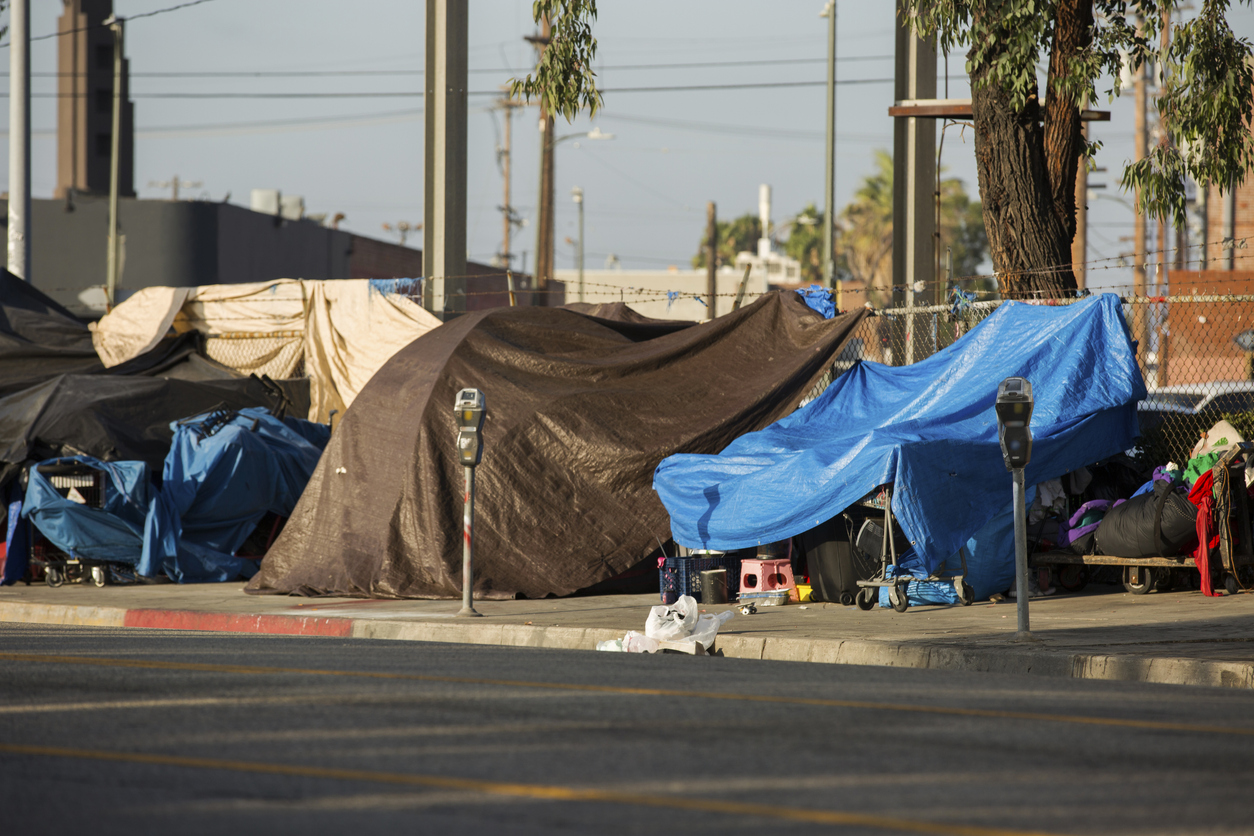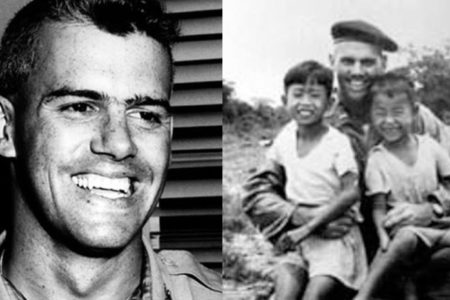
Share On Social!
This is part of the Salud America! Achieving a Cohesive Culture for Health Equity in Latino and All Communities: A Research Review»
Intergroup Contact Theory
At the individual level, the contact hypothesis of social psychology, also called the intergroup contact theory, proposes that members of one group, having incomplete or inaccurate ideas about members of another group, can positively change their beliefs and attitudes toward that group via contact, whether face-to-face or through other interactive methods such as computer-mediated communication.75
Using Intergroup Contact to Address Compassion for Immigrants
Joyce and Harwood75 recruited students from communications classes at a large university in Arizona to participate in an intergroup contact study. Of the 147 participants, 125 were white, 3 were black, 4 were Asian American, 8 were Latino, 2 were Native American, and 2 were unidentified.
The participants were randomly assigned to view one of four videos. Three of the videos were taken from a documentary called 30 Days that chronicled a United States border patrolman sent to live with a family of illegal immigrants for 30 days. The three videos represented three different portrayals of intergroup contact: one was 80% positive, one was mixed, and one was 80% negative. The fourth video was a control and consisted of footage from a nature documentary. After viewing, the participants were instructed to fill out an online questionnaire.75
The positive condition resulted in more positive attitudes toward illegal immigrants. When there was higher identification with the border patrol officer, his negative interactions with the illegal immigrant had a stronger impact on decreasing positive attitudes toward illegal immigrants compared to when identification with the border patrol officer was lower, and greater identification with the illegal immigrant character was associated with positive attitudes toward illegal immigrants. There was a mediating effect for groups related to illegal immigrants either socio-politically or as a minority; as an example, negative attitudes toward illegal immigrants were related to negative attitudes toward the poor. However, likeability of the out-group member was associated with positive attitudes toward the out-group, highlighting the importance of intergroup friendships.75
Taylor et al.80 used data from the 2010 Chicago Area Study to determine whether interpersonal contact with Latinos would have any effect on whites’ immigration policy views. The Chicago Area Study was a survey of adults in Lake County, Illinois, an area that saw a four-fold increase in the Latino population (from 4.8% to 20%) between 1990 and 2010. The authors’ study questions and analysis focused on non-Latino white respondents.
 The study included a resistance-to-immigration scale, with questions about increasing border security, work site raids, and deportation; an opposition-to-assistance-for-immigrants scale, with questions about the DREAM Act and programs to help immigrants start small businesses; and a five-level prefer-lower-immigration-rate item.80
The study included a resistance-to-immigration scale, with questions about increasing border security, work site raids, and deportation; an opposition-to-assistance-for-immigrants scale, with questions about the DREAM Act and programs to help immigrants start small businesses; and a five-level prefer-lower-immigration-rate item.80
The authors hypothesized that results would be moderated by acquaintance with an undocumented immigrant, and affirmation of substantial local anti-Latino discrimination. Results showed that more interpersonal contact with Latino immigrants had a significant inverse relationship with the respondents’ desire for decreased legal immigration, and those who denied substantial local anti-Latino discrimination were more likely to prefer lower immigration rates, though this result only approached statistical significance. In addition, those who validated local anti-Latino discrimination were significantly more likely not to call for lower immigration rates, and interpersonal contact with Latino immigrants predicted fewer calls for increased border security and increased work place raids. These results suggest that the inverse relationship between interpersonal contact with Latinos and immigration resistance is strengthened among those who are aware of the problems faced by Latino immigrants.80
Using Intergroup Contact to Address Prejudice
Intergroup contact theory supposes that the greater the interaction between in-group and out-group members, the less prejudice exhibited by the in-group; cross-group friendships in particular help to attenuate this prejudice.
Kiehne and Ayon67 conducted a study to determine how political orientation and friendships with immigrants affect negative attitudes toward immigrants, as, in the United States, anti-immigrant propaganda is typically perpetuated by conservative political groups and is often represented in the political platforms of Republican Candidates.67
The authors performed a cross-sectional analysis of data from the Transatlantic Trends Survey. Of the 1,000 U.S. participants included in this study, 13.3% were African American, 8.8% were Latino, and the remainder were white. Approximately two thirds of respondents had either a high school diploma or a college degree, and 84.4% had religious affiliation. Participants were asked about their political affiliations and how they felt toward immigrants67.
 Results of the analysis showed that lower levels of anti-immigrant sentiment were associated with African American ethnicity, Latino ethnicity, and higher levels of education (all P < 0.001). Religious affiliation was associated with higher levels of anti-immigrant sentiment (P < 0.001). In addition, both liberal political ideology (P < 0.001) and immigrant friends (P < 0.001) were significantly associated with lower levels of anti-immigrant sentiment. Interestingly, having immigrant friends did not have a significant moderation on the effects of political conservatism on anti-immigrant sentiment.67
Results of the analysis showed that lower levels of anti-immigrant sentiment were associated with African American ethnicity, Latino ethnicity, and higher levels of education (all P < 0.001). Religious affiliation was associated with higher levels of anti-immigrant sentiment (P < 0.001). In addition, both liberal political ideology (P < 0.001) and immigrant friends (P < 0.001) were significantly associated with lower levels of anti-immigrant sentiment. Interestingly, having immigrant friends did not have a significant moderation on the effects of political conservatism on anti-immigrant sentiment.67
Children show evidence of prejudice and stereotyping as early as 3 or 4 years old; children who are members of minority and/or low-status groups are often aware of prejudice and stereotyping earlier than non-minority or high-status children, likely because they have been the target of discrimination by other groups.76
Using Intergroup Contact to Address Feelings on Poverty
McCall et al.81 conducted a series of studies to determine whether knowledge of rising inequality would impact Americans’ beliefs about the factors leading to income inequality. Participants were assigned to either an inequality treatment condition or a comparable control condition.
Those in the inequality condition read an article about rising income inequality in the United States; the article did not call attention to any particular social group, nor did it discuss the issue of opportunity. The control group participants read a similar length article about baseball.81
Participants then answered questions about the importance of structural or system factors, such as coming from a wealthy family or having well-educated parents, and individual factors, such as hard work and ambition, in getting ahead. Those in the inequality treatment group rated structural factors as more important than individual factors in getting ahead, as compared to the control group (both P < 0.001).81
In the second study, participants were randomly assigned to one of three conditions. In the inequality condition, participants read the same article as in the first study followed by an article related to cooking. In the American Dream condition, participants read the article from the first study followed by a rags-to-riches story about an individual’s upward mobility. The control group participants read the baseball and cooking articles. Those in the inequality condition rated structural factors as more important in getting ahead compared to the control condition; however, there was no significant reduction in the beliefs about the importance of individual factors. Participants in the inequality condition did rate individual factors as less important than those in the American Dream condition. Interestingly, the American Dream article did not reduce participants’ concerns about structural factors, and those in the American Dream condition considered structural factors more important than those in the control condition.81
 Participants in the third study answered the same questions as in the first study, followed by two questions regarding policies to combat inequality and a third question forcing participants to choose which group (low-income individuals, charities, high-income individuals, the government, or major companies) held the most responsibility for reducing income inequality.
Participants in the third study answered the same questions as in the first study, followed by two questions regarding policies to combat inequality and a third question forcing participants to choose which group (low-income individuals, charities, high-income individuals, the government, or major companies) held the most responsibility for reducing income inequality.
The inequality group again rated structural factors are more important than individual factors and was also significantly more likely to hold both the government and major businesses as most responsible and less likely to hold low-income individuals responsible.81
The narratives that exist to explain racial/ethnic economic disparities are insidious, entrenched in the idea that these outcomes are due to individual choices such as spending habits and poor academic attainment. These are internal explanations for the negative outcomes that affect outgroups, and it is common for people to blame outgroup members for their problems on the basis of factors perceived to be within their control; the popular “bootstraps” myth is an example of this type of narrative. External explanations, on the other hand, include forces that are deemed to be beyond the individual or group’s control. These explanations are generally applied to explain away positive events rather than negative ones: an outgroup member succeeding as a result of receiving government assistance, for example, rather than being the victim of racist government policies that intentionally depress the wealth-building potential of minority households. But what if the outgroup member is perceived as not being in control of a negative outcome? Would this evoke more compassion?13,82
Gill et al.82 conducted a series of correlational and experimental studies to test the hypothesis that people would indeed show more compassion for outgroup members if the outgroup members were seen as not being in control of the outcome, such as a situation where poor academic performance was due to cognitive deficit rather than laziness. The first study was correlational and examined the attitudes of whites toward African Americans. Results showed that white participants did favor external explanations in situations where outgroup members were perceived to have less control, and they also reported increased perceptions of suffering. Moreover, whites’ perception of black suffering was associated with increased compassion, and whites’ perception of black control was associated with reduced compassion. Interestingly, after moderating for control, results showed that external explanations can foster increased compassion, even if perceived control is high, suggesting that external explanations increase the perception of outgroup suffering.82
The second study was an experimental study of attitudes toward Chechen militants, a group that has committed controllable acts of violence. Manipulation of external explanations for the actions of Chechen militants did increase perceived suffering, which increased feelings of compassion, again suggesting that external explanations can generate compassion, even when the outgroup is perceived as being in control of its negative actions.72
The third study was the same as the first, with some additional measures: identification with outgroups and depth of cognitive processing. The depth of cognitive processing moderator was measured via the need for cognitive closure, or NFCC; those high in NFCC prefer quick and certain answers, while those low in NFCC engage in extended contemplation. Deep thinkers (low in NFCC) were more likely to perceive suffering as being a result of external explanations compared to shallow thinkers (high in NFCC). As a result, deep thinkers showed more compassion than shallow thinkers in the face of external explanations; similarly, and perhaps unsurprisingly, those who identified more strongly with the outgroup had more compassion than those who did not identify with the outgroup.82
In study four, participants were educated about the negative behaviors of a fictitious outgroup; the presence or absence of external explanations varied. In addition, participants were placed under either a high or low cognitive load during the learning process; this entailed identifying various high- or low-pitched sounds. Results showed significantly reduced perceived suffering among those in the high cognitive load condition compared to those in the low cognitive load condition when external explanations were provided. There was no effect on perceived suffering between high and low cognitive load conditions when internal explanations were provided.82
Quick links from our Research Review »
See the Guide: System Justification!
See the Guide: Moral Disengagement!
More from our Research Review »
- Introduction/Methods
- Research: Poverty among Latinos
- Research: Rural Poverty
- Research: Poverty and Healthcare
- Research: Discrimination and Education
- Research: Discrimination and Outcomes
- Mechanism: Implicit Bias
- Mechanism: System Justification
- Mechanism: Moral Disengagement
- Strategy: Intergroup Contact Theory
- Strategy: Peer Modeling
- Strategy: Implicit Bias Training
- Strategy: Effective Communication
- Strategy: Social Media for Social Change
- Strategy: Building Social Cohesion
- Policy Implications
- Future Research
References for this section »
13. Wiehe M., Nieves E, Greer J, Newville D. Race, Wealth, and Taxes: How the Tax Cuts and Jobs Act Supercharges the Racial Divide.; 2018. https://prosperitynow.org/sites/default/files/resources/ITEP-Prosperity_Now-Race_Wealth_and_Taxes-FULL REPORT-FINAL_6.pdf. Accessed June 11, 2020.
67. Kiehne E, Ayón C. Friends or Foes: The Impact of Political Ideology and Immigrant Friends on Anti-Immigrant Sentiment. Vol 43.; 2016.
72. Crawford JT, Brandt MJ, Inbar Y, Chambers JR, Motyl M. Social and economic ideologies differentially predict prejudice across the political spectrum, but social issues are most divisive. J Pers Soc Psychol. 2017;112(3):383-412. doi:10.1037/pspa0000074
74. Devine PG, Forscher PS, Austin AJ, Cox WTL. Long-term reduction in implicit race bias: A prejudice habit-breaking intervention. J Exp Soc Psychol. 2012;48(6):1267-1278. doi:10.1016/j.jesp.2012.06.003
75. Joyce N, Harwood J. Improving Intergroup Attitudes through Televised Vicarious Intergroup Contact: Social Cognitive Processing of Ingroup and Outgroup Information. Communic Res. 2012;41(5):627-643. doi:10.1177/0093650212447944
76. Bigler RS, Wright YF. Reading, Writing, Arithmetic, and Racism? Risks and Benefits to Teaching Children About Intergroup Biases. Child Dev Perspect. 2014;8(1):18-23. doi:10.1111/cdep.12057
80. Taylor MC, Krysan M, Hall M. The Uncertain Impact Of Anglo/Latino Contact On Anglos’ Immigration Policy Views: Awareness of Latinos’ Problems Is the Key. Du Bois Rev. 2020;14(2):471-495. doi:10.1017/S1742058X1700013
81. McCall L, Burk D, Laperrière M, Richeson JA. Exposure to rising inequality shapes Americans’ opportunity beliefs and policy support. Proc Natl Acad Sci U S A. 2017;114(36):9593-9598. doi:10.1073/pnas.1706253114
82. Gill MJ, Andreychik MR, Getty PD. More Than a Lack of Control: External Explanations Can Evoke Compassion for Outgroups by Increasing Perceptions of Suffering (Independent of Perceived Control). Personal Soc Psychol Bull. 2013;39(1):73-87. doi:10.1177/0146167212460281
By The Numbers
3
Big Excuses
people use to justify discriminatory behavior




[…] 80,000 in the Vietnam War in 1959-1973, and more than 400,000 in World War II in 1939-1945, reports Salud […]